- Home
- »
- DevOps

Awarded by Telangana Higher Education as Emerging EdTech of India



 Job - Ready Course
Job - Ready Course
 Job - Ready Course
Job - Ready Course
Join our DevOps course in Hyderabad with certification, live labs, and placement help. Tap into 12,000+ DevOps job opportunities across India
- Mode: Offline | Online | Live Recorded Sessions
- 150+ Hours of learning
- Guaranteed virtual internships with Infosys & Cognizant
- Certificates from NASSCOM and AWS
- 6+ Real-time projects & 1 individual project
- Guaranteed Interview Opportunities
In Collaboration With




Key-Highlights
Hybrid Mode of learning (Online, Offline and access to live recorded sessions)
Guest Lectures with Industry leaders from Microsoft & IIM Faculty
10+ Capstone Projects + 1 Individual end-to-end Project
1:1 Interactions with mentors to track progress
Exclusive batches for beginners
Exclusive Community access
Corporate Readiness Program
Profile & Resume building sessions
Accreditations and Certification
Join Our Live Demos & Hands-On Workshops in DevOps!
Course Overview
In this DevOps Certification course, WhiteScholars provides the skills you need to accelerate your career in cloud, automation, and software delivery. By the end of the course, you will have gained industry-relevant skills in Linux, Git, Jenkins, Docker, Kubernetes, Terraform, Ansible, AWS, and Azure DevOps. This program is designed to make you job-ready with hands-on labs, real-world projects, and DevOps training and placement support.
The topics covered in this Data Science program and the modules you will learn are
- Module 1 – Python Fundamentals and Oops Concept.
- Module 2 – Data Handling with Pandas APIs and Web Services.
- Module 3 – Complete Data Visualization and Advanced Data Analysis.
- Module 4 – Advanced Data Handling with Pandas and Web Scraping.
- Module 5 – Statistics with Probability Distributions and Inference.
- Module 6 – Advanced Machine Learning with Supervised / Unsupervised learning.
- Module 7 – Natural Language Processing (NLP) with Model Deployment and Productionization.
- Module 8 – Deep Learning Foundations with Training Techniques.
- Module 9 – Generative AI and Tableau.
- Module 10 – Advanced SQL with Power BI.
- Module 11 – Integration with Other Tools.
- Module 12 – Best Practices and Case Studies.
By completing this course DevOps, you will master automation, cloud deployments, CI/CD pipelines, container orchestration, and monitoring. These are the top skills required in global DevOps engineer training roles.
Companies worldwide are shifting to DevOps for faster releases and efficient workflows. With our best DevOps training in India, you’ll be equipped with in-demand skills to secure high-paying roles.
A DevOps engineer manages deployments, monitors systems, writes automation scripts, and collaborates with developers. Our DevOps training in Hyderabad prepares you for this dynamic career with real projects.
Tools Covered
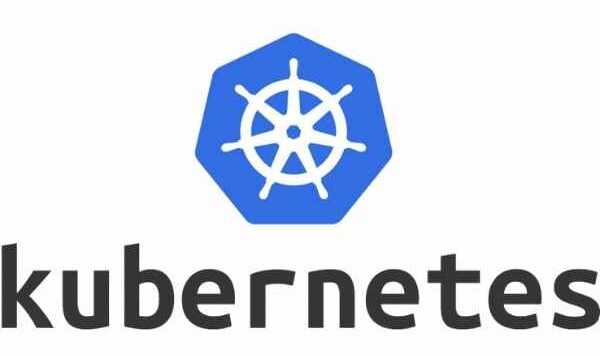
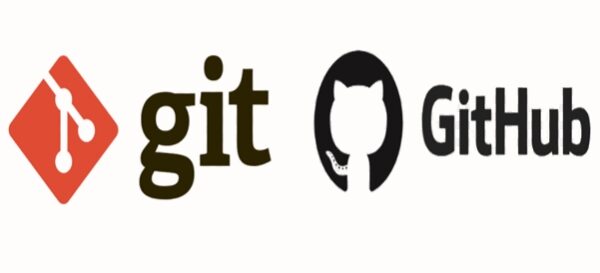
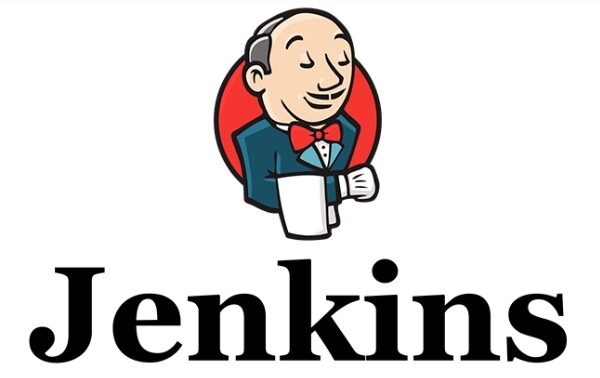

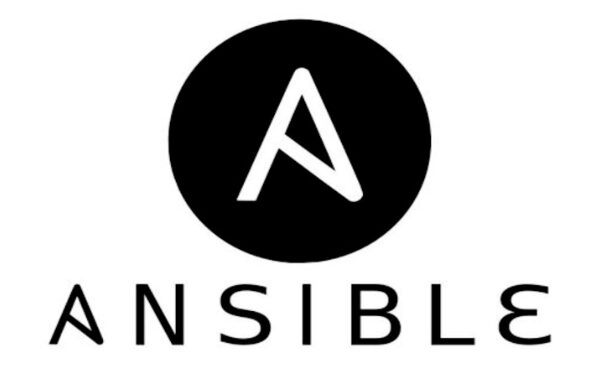
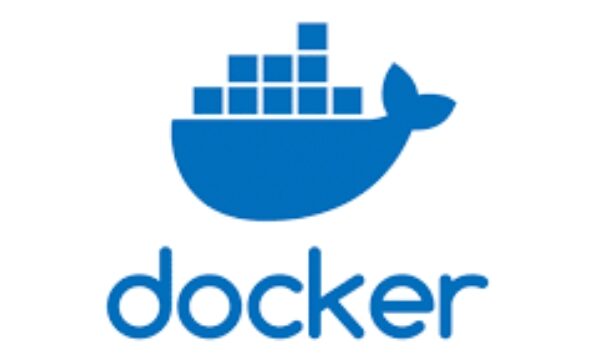
Know Your Mentors

Swapnil
Sr. Data Analyst
20 Years Experience

Vishnu Murthy
Sr. Data Scientist
20 Years Experience

Satya Kumar
Sr. Data Scientist
12 Years Experience


Satish
Sr. Data Scientist
5 Years Experience

Program Highlights
Master data science from experts who make the concepts easy and fun to learn
- Learn directly from the Industry experts.
- Interactive and engaging sessions helping you learn the real-world concepts.
- Simplified learning approach to make tough data concepts easy to grasp.
- Hands-on activities to help you apply what you learn instantly.
- Gain firsthand industry insights to make you job-ready.
- Work on 7+ Guided Projects and 1 Individual Project with trainers assistance.

WhiteScholars data science course helps you find real job opportunities through strong industry connections.
- Join a network of 100+ hiring managers from top companies.
- Get regular updates on job openings, interviews, and referrals.
- Build strong industry connections to make yourself visible to the recruiters.
- Stay one step ahead in job search with WhiteScholars.
- Gain Community access of industry recruiters.
- Participate in placement drives by top companies exclusive for WhiteScholars Students.

WhiteScholars data science course is structured in collaboration with senior leading data scientists to match the real-time industry needs.
- Designed with insights from top data science industry experts.
- Focuses more on a practical approach to learning.
- Covers Python, SQL, Machine learning, and Power BI.
- The Data Science course is aligned with the industry needs.
- Work on live projects, weekly assignments, 7+ industry-relevant projects, and individual projects.
- Get job-ready skills that companies actually look for.

Work on real-time projects, case studies, and relevant assignments, with the course making you industry-ready.
-
Developing personalized recommendation systems:
a. Understanding Netflix Recommendation Engine
b. Swiggy’s dish recommendations. - Diagnosing diseases through MRI scan analysis of body organs.
- Creating conversational AI bots to enhance customer interactions and satisfaction.
- Predicting the likelihood of fraudulent insurance claims.
- Classifying product reviews on e-commerce platforms.
- Building AI based Smart Search applications.

Learner's Journery

Curriculum and Modules
- What is programming?
- History of Python.
- Setting up the development environment.
- IDLE.
- Jupyter Notebook.
- VS Code.
- Writing and running your first Python program.
- Comments.
- Indentation.
- Printing to the console.
- Numbers (integers, floats).
- Strings.
- Booleans.
- Numbers (integers, floats).
- Strings.
- Booleans.
- Conditional statements (if, elif, else).
- Loops (for loops, while loops).
- Break, continue, and pass statements.
- Defining and calling functions: Function arguments and return values.
- Scope and lifetime of variables in Lambda functions.
- Creating and accessing lists.
- List operations (indexing, slicing, adding, removing elements).
- List methods.
- append.
- extend.
- insert.
- remove.
- pop.
- clear.
- index.
- count.
- sort.
- Reverse.
- Creating and accessing tuples.
- Tuple methods.
- Creating and accessing sets.
- Set operations.
- union.
- intersection.
- Difference.
- Creating, accessing, and modifying dictionaries: Dictionary methods.
- keys.
- values.
- items.
- get.
- pop.
- update.
- String operations.
- concatenation.
- slicing.
- formatting.
- String methods.
- find.
- replace.
- split.
- join.
- lower.
- upper.
- Strip.
- Reading from files.
- Writing to files.
- Working with CSV files using the csv module.
- Importing modules.
- Standard library overview.
- Math.
- Datetime.
- Random.
- Installing and using third-party packages (pip).
- Understanding exceptions.
- Try, except, else, finally blocks.
- Raising exceptions.
- Classes and objects.
- Attributes and methods.
- Inheritance.
- Polymorphism.
- List comprehensions.
- Dictionary comprehensions.
- Set comprehensions.
- Understanding and using decorators.
- Creating and using generators.
- Introduction to regular expressions.
- Using the re module for pattern matching.
- Introduction to Pandas.
- DataFrames and Series.
- Reading from and writing to different file formats.
- CSV.
- Excel.
- JSON.
- Data cleaning and manipulation.
- Introduction to Matplotlib and Seaborn.
- Plotting graphs and charts.
- Customizing plots.
- Introduction to web scraping.
- Using BeautifulSoup and requests.
- Handling web scraping challenges.
- Pagination.
- Dynamic content.
- Understanding APIs.
- Making HTTP requests using requests.
- Parsing JSON data.
- Introduction to SQL and databases.
- Using SQLite with Python.
- Performing a CRUD operation.
- Understanding concurrency vs. parallelism.
- Using the threading and multiprocessing modules.
- Writing unit tests with unittest and pytest.
- Debugging techniques and tools.
- Abstract classes and interfaces.
- Design patterns.
- Metaclasses.
- Introduction to NumPy for numerical computing.
- SciPy for scientific computing.
- Exploring additional libraries as per interest.
- TensorFlow for machine learning.
Module 1: Introduction to Server & Linux
- Client-Server Architecture
- Concepts and examples
- Roles of client and server in a network
- GUI vs CLI
- Differences and use cases
- Advantages of CLI for server management
- Navigating through CLI
- Basic commands: pwd, cd, ls
- Understanding the file system hierarchy
- Getting Help
- Using man pages
- Help commands like –help and info
Module 2:File Hierarchy System (FHS)
- Using Relative Path and Absolute Path
- Understanding and using paths
- Common File Types
- Regular files, directories, links, and special files
Module 3: Basic File Management
- Create Files and Directories
- touch and mkdir
- File and Directory Operations
- Copy (cp), paste, remove (rm), move (mv), rename
- File Editing
- Introduction to text editors (vim)
Module 4: Basic User Management
- User Login Activity and Information
- Viewing login records (last, who, w)
- Local User Authentication Files
- Understanding /etc/passwd, /etc/shadow
- User Account Management
- useradd, usermod, userdel
- Custom configurations and user profiles
Module 5: Advanced User Management
Setting Passwords- Using passwd command
Linux Groups and Their Management- Group management commands: groupadd, groupmod, groupdel
- Substituting Users and Super User (SUDO)
- Configuring and using sudo
- Security best practices for sudoers
- Changing Ownership
- Using chown and chgrp
Module 6: Advanced File Management
File and Directory Access Permissions- Understanding and setting permissions with chmod
- Symbolic and numeric modes
File Searching with find Command- Using find for file searches
- Practical examples with find
Module 7: Variables and Meta Characters
Variables- Environment variables and shell variables
- Variable substitution
Command Substitution- Using backticks and $(command)
Metacharacters- Understanding and using metacharacters (e.g., *, ?, {} |)
- Grep command
Module 8: Linux Processes and Task Scheduling
- Processes and Priorities
- Understanding process states
- Monitoring processes with ps and top
Controlling Processes with Signals- Sending signals with kill
- Job Scheduling
- One-time jobs with at
- Recurring jobs with cron
- Managing cron jobs (crontab)
Module 9: Package Management and Systemctl
Installing Packages- Using package managers (e.g., apt, yum)
- Uninstalling Packages
- Removing packages with package managers
Managing Services with systemctl- Starting, stopping, enabling, and disabling services
- Checking service status
-
What is VCS and Its Advantages?
- Introduction to Version Control Systems (VCS)
- Benefits of using VCS (e.g., collaboration, version tracking, backup)
- Installing and Configuring Git
- Downloading and installing Git on various operating systems
- Initial configuration (git config for username, email, etc.)
- git config –global user.name “Your Name”
- git config –global user.email “your.email@example.com”
- Creating a GitHub Account
- Setting up a GitHub account
- Overview of GitHub features and interface
- Familiarizing with Git Bash
- Basic command-line interface commands
- Navigating directories, and basic file operations in Git Bash
- Commands: pwd, ls, cd, touch, mkdir, rm
- Working Area
- Understanding the working directory
- Tracking changes with git status
- Viewing differences with git
- Staging Area
- Adding changes to the staging area with git add
- Viewing staged changes with git
- Local Repository
- Committing changes with git commit
- Viewing commit history with git log
- Commands: git commit -m “commit message”, git log
- Managing Remote Repositories
- Connecting to remote repositories with git remote
- Viewing and managing remote connections
- Commands: git remote add origin , git remote -v
- Pushing Code to Remote Repositories
- Pushing changes with git push
- Understanding the push workflow and upstream branches
- Command: git push origin main
- Cloning Repositories
- Cloning repositories with git clone
- Working with cloned repositories
- Command: git clone
- Creating & Managing Branches
- Creating branches with git branch and git checkout
- Switching branches with git switch
- Viewing branches with git branch –list
- Commands: git branch , git checkout ,
- Merging Branches
- Merging branches with git merge
- Understanding fast-forward and recursive merges
- Command: git merge
- Resolving Merge Conflicts
- Identifying merge conflicts
- Manually resolving conflicts and committing the resolution
- Introduction to Jenkins
- What is Jenkins and its benefits in CI/CD
- Overview of Jenkins architecture
- Installation
- Installing Jenkins on various operating systems
- Initial setup and configuration
- Securing Jenkins with basic security settings
- Introduction to Jenkins Dashboard
- Overview of the Jenkins interface
- Key components of the dashboard
- Creating Your First Job
- Job types and their uses
- Step-by-step guide to creating a freestyle project
- Configuring job settings
- Redirecting Your Job Output to a File
- Configuring build steps to redirect output
- Managing build logs and artifacts
- Creating Various Users
- Adding and managing users in Jenkins
- Installing Required Plugins
- Identifying and installing essential plugins for user management
- Assigning Roles
- Setting up role-based access control (RBAC)
- Assigning roles and permissions to users
- Configuring email notifications for multiple recipients
- Configuring Jenkins to Send Mail
- Setting up email notifications
- Configuring SMTP server settings
- Sending Mail to Multiple Accounts
- Creating email notifications for job results
- Configuring Upstream & Downstream Jobs in Jenkins
- Setting up job dependencies
- Managing job execution order
- Configuring Scheduled Jobs in Jenkins
- Setting up cron jobs for periodic builds
- Managing build schedules
- Introduction to Git Plugin
- Installing and configuring the Git plugin
- Git with Poll SCM
- Setting up SCM polling to trigger builds
- Configuring Git repository integration
- Remote Triggers with Git
- Setting up remote build triggers using
- Introduction to Jenkinsfile
- Understanding Pipeline as Code concepts
- Jenkinsfile syntax and structure
- Writing Your First Pipeline as Code
- Creating a simple pipeline script
- Using declarative and scripted pipelines
- Creating an EC2 Instance with Jenkins Using Terraform
- Introduction to Infrastructure as Code (IaC) with Terraform
- Setting up Terraform on Jenkins
- Writing a Jenkins pipeline to provision an EC2 instance using Terraform
- Server vs Virtual Machines vs Containers
- Comparison of different virtualization technologies
- Advantages of containers over VMs
- Problems Docker Solves
- Challenges in software deployment and scalability
- How Docker addresses these challenges
- Installing and Configuring Docker
- Step-by-step installation on various operating systems
- Basic configuration settings
- Docker CLI
- Overview of Docker command-line interface
- Commonly used Docker commands
- Images vs Docker Containers
- Understanding the difference between images and containers
- Managing images and containers with Docker CLI
- Attached and Detached Mode
- Running containers in attached and detached mode
- Use cases for each mode
- Working with Docker Images
- Pulling images from Docker Hub
- Listing and inspecting images with Docker CLI
- Overview of Dockerfile
- Introduction to Dockerfile syntax and directives
- Building custom images using Dockerfile
- Writing Custom Dockerfiles
- Writing Dockerfiles for custom applications
- Best practices for Dockerfile design
- Building Custom Images from Dockerfiles
- Using docker build command to build images
- Building images with build-time arguments and environment variables
- Managing Images with CLI
- Managing image tags and versions
- Removing unused images
- Creating Docker Hub Account
- Setting up a Docker Hub account
- Overview of Docker Hub features
- Tagging Docker Images
- Tagging images with version numbers and labels
- Best practices for image tagging
- Docker Commit
- Committing changes to containers as new images
- Creating images from running containers
- Pushing Images to Central Repository
- Pushing images to Docker Hub
- Configuring authentication for Docker Hub
- AWS Elastic Container Registry (ECR)
- Overview of AWS ECR
- Pushing images to AWS ECR
- Overview of Docker Networking
- Understanding Docker networking concepts
- Different network modes in Docker
- Port Binding
- Exposing container ports to the host machine
- Mapping container ports to specific host ports
- Bridge and Host Networks
- Understanding bridge and host network modes
- Use cases for each network mode
Module 1: Understanding Container Orchestration
- Introduction to Kubernetes Architecture
- Overview of Kubernetes components (Master Node, Worker Nodes)
- Understanding Kubernetes control plane (API Server, Scheduler, Controller
- Introduction to Kubernetes Architecture
Manager, etc.)
- Kubernetes cluster architecture and its benefits
- Installing and Configuring Kubectl
- Installing kubectl on various operating systems
- Configuring kubectl to interact with a Kubernetes cluster
- Basic kubectl commands and their usage
Module 2: Understanding Managed Kubernetes Architecture (Elastic Kubernetes Service)
- Elastic Kubernetes Service (EKS) Overview
- Introduction to Amazon EKS and its components
- Differences between self-managed and managed Kubernetes services
- Eksctl and Kubeconfig File
- Installing and configuring eksctl
- Using eksctl to create and manage EKS clusters
- Configuring kubeconfig to access the EKS cluster
- Creating Clusters Using AWS CLI
- Step-by-step guide to creating a Kubernetes cluster using AWS CLI
- Managing cluster nodes and configurations
- Understanding Eksctl Tool
- Detailed overview of eksctl commands and functionalities
- Best practices for managing EKS clusters with eksctl
Module 3: Understanding Pods
- Managing Pods Using CLI and YAML Formats
- Introduction to Pods and their lifecycle
- Creating, managing, and deleting Pods using kubectl commands
- Writing YAML files to define Pod specifications
- Practical examples of Pod configurations
Module 4: Replicasets and Deployments
- Replicasets
- Introduction to Replicasets and their purpose
- Creating and managing Replicasets using kubectl and YAML
- Scaling applications with Replicasets
- Deployments
- Understanding Deployments and their role in application management
- Creating and managing Deployments using kubectl and YAML
- Using Deployments to ensure high availability and scalability
- Rolling Updates and Rollbacks in Deployments
- Implementing rolling updates to deploy new versions of applications
- Monitoring and managing rolling updates
- Performing rollbacks to previous versions in case of issu
Module 1: Introduction to Infrastructure as Code (IaC)
- Introduction to IaC
- ○ Definition and benefits of IaC
- ○ Comparison of IaC tools
- Understanding IaC Concepts
- ○ Declarative vs. imperative configurations
- ○ Overview of Terraform architecture
- Installing Terraform on Servers
- ○ Step-by-step installation on various operating systems
- ○ Verifying installation
- Setting up Visual Studio Code
- ○ Installing and configuring Visual Studio Code
- ○ Installing Terraform extensions for VS Code
Module 2: Deploying Infrastructure with Terraform
- Authentication and Authorization
- ○ Setting up credentials for cloud providers
- ○ Managing access with IAM roles and policies
- Launching First VM through Terraform
- Writing the first Terraform configuration file
- ○ Initializing and applying configurations to launch a VM
- Provider Tiers
- ○ Understanding different providers and their configurations
- Provider Tiers
○
- Configuring provider-specific settings
- Creating a GitHub Repository with Terraform
- ○ Automating repository creation with Terraform
- ○ Managing repository settings and permissions
- Terraform Destroy
- ○ Safely destroying infrastructure
- ○ Managing resource lifecycle with terraform destroy
- Understanding Terraform State Files
- ○ The role of state files in Terraform
- ○ Managing and securing state files
- Desired and Current States
- ○
- Understanding the concept of desired and current states
- ○ How Terraform reconciles these states
Module 3: Read, Generate, Modify Configurations
- Cross Resource Attributes
- ○ Referencing attributes between resources
- ○ Using resource outputs as inputs to other resources
- Output Values
- ○ Defining and using output values
- ○ Exporting data from your configurations
- Terraform Variables
- ○ Defining and using variables
- ○ Variable types and validation
Module 4: Modules and Remote State Management
- Understanding DRY Principle
- Importance of DRY (Don’t Repeat Yourself) in Terraform
- Structuring configurations to avoid redundancy
- EC2 Module with Terraform
- Creating reusable EC2 module
- Using modules in your configurations
- Terraform Modules
- Passing variables to modules
- Module outputs
- Remote Backend with Terraform S3
- Setting up remote state storage in S3
- Configuring Terraform to use remote backends
- How Ansible Works
- Introduction to Ansible and its architecture
- Understanding the control node and managed nodes
- Push-based configuration management
- Setting Up Ansible
- Installing Ansible on various operating systems
- Configuring Ansible control node
- Verifying the installation
- YAML 101
- Basics of YAML syntax
- Writing and reading YAML files
- Common pitfalls in YAML
- YAML Challenge
- Practical exercises to reinforce YAML skills
- Inventory Files 101
- Introduction to Ansible inventory
- Structure and format of inventory files
- Using inventory files to manage nodes
- INI Challenge
- Writing inventory files in INI format
- Practical exercises on creating and managing INI files
- Writing AWS Inventory Files
- Inventory with AWS
- Configuring Ansible to use AWS inventory
- Practical example of AWS inventory setup
- Understanding the Documentation
- Navigating the Ansible documentation
- Finding module-specific documentation
- Understanding Ansible’s documentation structure
- Creating Your First Playbook
- Structure of a playbook
- Writing a simple playbook
- Playbook syntax and best practices
- Running Playbooks
- Executing playbooks with ansible-playbook
- Common options and flags
- Debugging playbook runs
- Using the Service Module
- Managing services with Ansible
- Starting, stopping, and restarting services
- Example: Managing a web server service
- Understanding Handlers
- Concept of handlers in Ansible
- When to use handlers
- Creating and triggering handlers
- Creating Handlers
- Writing handlers in playbooks
- Using handlers to manage service state
- Using Shell Modules
- Running shell commands with Ansible
- Using the shell and command modules
Accordion Content
Module 1: Introduction to Cloud Computing
- What is Cloud Computing
- Definition and key concepts
- On-demand availability and scalability
- Cloud Implementation Models
- Public, Private, and Hybrid Clouds
- Advantages of Cloud Computing
- Cost efficiency, flexibility, disaster recovery, and more
Module 2: Getting Started with AWS
- Creating an AWS Free Tier Account
- Account setup and initial configuration
- AWS Global Infrastructure
- Overview of Regions, Availability Zones & Edge locations
- Tour of the AWS Console & Services in AWS
- Navigation and key services overview
Module 3: Elastic Compute Cloud (EC2)
- Creating EC2 Instances
- Instance types, AMIs, and instance launch
- Security Groups & Classic Ports
- Configuring security groups and common port settings
- SSH Overview
- Key pair creation and SSH connection setup
- Private vs Public vs Elastic IP
- IP addressing and usage
- EC2 hibernate
- Setting up and using hibernation
Module 4: Identity and Access Management (IAM)
- IAM Introduction
- Core IAM concepts and architecture
- Managing Users and Groups
- Creating and managing IAM users and groups
- IAM Group Policies and Inline Policies
- Difference and use cases
- IAM Multi-Factor Authentication (MFA)
- Setting up MFA for enhanced security
- IAM Roles for AWS Services
- Creating and assigning roles
- AWS CloudShell
- Introduction and use cases
- IAM Best Practices
- Security best practices and guidelines
- AWS Policy Simulator
- Testing and validating policies
Module 5: EC2 Instance Storage
- EBS Overview
- Types and uses of Elastic Block Store
- Managing EBS Volumes
- Creating, attaching, and resizing volumes
- EBS Snapshots
- Creating and managing snapshots
- Cross-AZ and Regional Replication for EBS Volumes: Best Practices
- Configuring replication for high availability
- EBS Encryption
- Setting up encryption for data security
- Amazon Machine Images (AMI)
- Creating and managing AMIs
- Amazon EFS
- Setting up and using Elastic File System
- EFS Lifecycle Management
- Managing the lifecycle of files in EFS
- EBS vs EFS
- Comparison and use cases
Module 6: Simple Storage Service (S3)
- Introduction to S3
- Overview and use cases
- S3 Buckets and Objects
- Creating and managing buckets and objects
- S3 Versioning
- Enabling and managing versioning
- S3 Security and Bucket Policies
- Setting up bucket policies and access control
- Static Website Hosting
- Hosting a static website on S3
- Cross-Region and Same-Region Replication
- Configuring replication for data redundancy
- S3 Storage Classes
- Overview of storage classes and cost optimization
- Configuring S3 Lifecycle Rules
- Automating transitions and expiration
Module 7: High Availability and Scalability
- High Availability and Scalability
- Core concepts and benefits
- Introduction to Load Balancing
- Basic principles and use cases
- Different Types of Load Balancers in AWS
- Classic Load Balancers , Application Load Balancers
- Elastic Load Balancer
- Configuration and management
- Sticky Sessions (Cookies)
- Cross-Zone Load Balancing
- Connection Draining
- Auto Scaling Groups
- Setting up and configuring ASGs
- Scaling Policies
- Dynamic and scheduled scaling policies
- Scaling Triggers with CloudWatch Alarms
- Configuring alarms for auto-scaling
Module 8: DNS and Route 53
- What is DNS
- Basic DNS concepts
- Route 53 Overview
- Features and benefits
- Registering a Domain
- Domain registration and management
- Creating Records
- A, AAAA, CNAME, and other record types
- Routing Policies
- Simple, Weighted, Latency, Failover, Geo Proximity
- Integrating 3rd Party Domains with Route 53
- Setting up external domains
Module 9: Cloud Networking and VPC
- Introduction to Networking
- Basic networking concepts in the cloud
- CIDR
- Understanding and using CIDR notation
- Creating Public and Private Subnets
- Subnet creation and management
- Creating Public and Private VPCs
- VPC setup and configuration
- Creating a Custom VPC
- Advanced VPC configurations
- Creating and Managing Internet Gateways
- Setting up internet connectivity
- VPC Peering
- Configuring peering connections between VPCs
Module 10: CloudFront and Global Accelerator
- Introduction to CloudFront
- Content delivery and caching
- Setting Up CloudFront Distributions
- Configuring and managing distributions
- Global Accelerator Overview
- Improving performance and availability
- Setting Up Global Accelerator
- Configuration and management
Module 11: Budgets and Cost Management
- AWS Budgets Overview
- Setting up and managing budgets
- Cost Management Tools
- Using AWS Cost Explorer and reports
- Cost Optimization Best Practices
- Strategies for reducing AWS costs
Accordion Content
Accordion Content
Accordion Content
360 Degree Career Assistance
Get resume tips and upgrade it to make it more professional and impressive, so it stands out to recruiters correctly. Get guidance to build a strong portfolio that shows skills, real-time projects, and achievements in a professional way. Learn how to highlight strengths and tailor resumes for different roles. Structure your portfolio to reflect technical expertise and problem-solving abilities. Present your journey, growth, and real-time experience with confidence and clarity. Stand out to recruiters with a powerful resume and portfolio that showcase skills, projects, and potential.
- 20+ sample resumes.
- Github profile building.
- Project portfolio creation.
- Get tips to make ATS friendly resume.
- Exclusive resume guidance classes by the placement coordinator.
- Customised Resume as per the Job description and company profile.
- One-on-one resume Feedback and Suggestion tips to avoid common resume mistakes.

Get help to optimize your LinkedIn profile and make it look more professional and impressive to grab recruiters attention, boosting visibility, helping more people to connect, and growing professional network. WhiteScholars guides on how to write a strong headline, craft a clear summary, and highlight your skills, projects, and achievements in the right way. An optimized linkedin profile can open doors for your career. Make your LinkedIn profile work for you and get noticed by the right people.
- Get tips to optimize Linkedin.
- Learn how to build more connection and professional network with HRs.
- Explore and understand the best practices for writing impactful LinkedIn headlines and summaries that catch the recruiter's attention.
- Learn certificate and project updation in the featured section.
- Learn how to find company HR’s contact information.
WhiteScholars offers exclusive programs to step into the corporate world with confidence. The CRP modules are designed to help and guide you to improve your verbal communication skills to present your idea, confidently and professionally. Through interactive sessions,mock interviews and group discussions. Whitescholars focus on enhancing public speaking, presentation skills is essential for building confidence at the work place. In addition to this, the program also covers email etiquettes and professional behaviour preparing you to adept seamlesslesy to the office environment.
- Interactive group discussions and Jam sessions
- Student activities to develop interpersonal skills
- Develop essential soft skills to effective present yourself
- Regular project presentations to improve presentation skills.
- Build strong leadership skills and the potential to work effectively in teams.
- Improve your decision-making abilities through practical and real-world case studies.

Get interview tips and get prepared with mock interview sessions that help you boost confidence. Receive personalized feedback to improve your performance. Our expert mentors create real-time interview scenarios, helping to get comfortable with both technical and HR rounds. Learn how to handle difficult questions, structure your responses, and make a strong first impression. Our goal is to help you not just crack the interview but stand out.
- Get expert interview tips
- Practice with mock interview sessions
- Experience real time scenarios with technical and HR rounds
- Master your communication skills and build confidence to speak clearly and impress in the interview.
- Receive personalized feedback to improve.
- Learn how to master the STAR (Situtation, Task, Action, Result) technique to structure your answers.
At Whitescholars, our placement methodology is designed to ensure that every student is industry ready and confident to face the real world challenges. Students are made to understand the specific hiring requirements of the companies and trained with our crashed courses as per the job description.
- Understanding hiring requirements of the companies
- Tailored trainings with customised crash course as per JD
- Exclusive one on one Interview preparation
- Go through a skill gap assessment test
- On clearing it, appear for the interviews else get additional training support
- Benefit from continuous mentorship and expert career guidance during your placement journey

Student Lab Projects - AWS DevOps
High-Availability Web App Deployment (AWS)
Objective: Deploy a fault-tolerant web app using EC2, Load Balancer, and Auto Scaling.
Skills: EC2, ELB, Launch Templates, Auto Scaling Groups, IAM, SGs
- Launch EC2 instances across multiple AZs
- Attach an Application Load Balancer
- Configure Auto Scaling Group for dynamic scaling
- Implement IAM roles and secure access policies
- Deploy a sample app and test for failover by terminating instances
Static Website Hosting on S3
Objective: Host a static HTML/CSS website using S3 with versioning and lifecycle rules.
Skills:S3, Bucket Policies, Static Website Hosting, Lifecycle Configuration
- Create an S3 bucket and enable static hosting
- Enable versioning for rollback support
- Set lifecycle rules for storage cost optimization
- Secure site with bucket policies and public access block
- Upload and test your static site
Secure VPC Architecture with VPC Peering
Objective: Design and deploy a VPC with public/private subnets and peer it with another VPC.
Skills: VPC, Subnets, Route Tables, IGW, VPC Peering, SGs
- Create a VPC with 2 public and 2 private subnets
- Attach Internet Gateway for public subnets
- Configure route tables for isolation and flow
- Implement Security Groups for app-to-db flow
- Setup VPC peering with another VPC and validate with EC2-to-EC2 ping/curl
CI/CD Pipeline: GitHub → Jenkins → Terraform → Docker
Objective: Build a complete DevOps pipeline from code to infrastructure and container deployment.
Skills: Git, GitHub Webhooks, Jenkins, Terraform, Docker
- Source code managed in GitHub
- Jenkins pulls code on commit trigger
- Jenkins job runs Terraform to provision infra (e.g., EC2)
- Jenkins builds Docker image and pushes to DockerHub
- Deploy Docker container to the provisioned instance
- Bonus: Add basic test automation before deploy stage
CI/CD Pipeline for Automated AWS Infrastructure Provisioning
Objective: Automate infrastructure deployment using Jenkins and Terraform triggered from GitHub.
Skills: Jenkins, GitHub, Webhooks, Terraform, IAM
- Connect GitHub to Jenkins via webhook
- Configure Jenkins to clone code and execute Terraform plans
- Use variables and modules to create reusable infra logic
Infrastructure as Code with Terraform (Standalone Project)
Objective: Write reusable Terraform modules to deploy core AWS infra
Skills: Terraform Modules, Variables, Remote Backends
- Write Terraform to deploy VPC, subnets, SGs, and EC2
- Use variables and outputs effectively
- Store Terraform state remotely (e.g., S3 + DynamoDB)
- Bonus: Use provisioners to bootstrap EC2s post-launch
Dockerize a Node.js or Python App
Objective: Containerize a sample app and run it locally and on EC2.
Skills: Terraform Modules, Variables, Remote Backends
- Write a Dockerfile to containerize app
- Run app via Docker with environment configs
- Bonus: Push to DockerHub / ECR
Kubernetes Rolling Deployments and Rollbacks
Objective: Implement real-world zero-downtime deployment strategies using Kubernetes, with rolling updates and rollback capability
Skills: kubectl, Deployments, Rolling Updates, Rollbacks, Container Versioning
- Set up kubectl and access your cluster (Minikube, kind, or EKS)
- Create a Kubernetes Deployment using a versioned container (e.g., v1, v2)
- Perform a rolling update to a new version
- Simulate a failure (e.g., broken container image or crash loop)
- Perform a rollback to previous working version
- Verify success with browser/curl or Kubernetes rollout status
- (Bonus: Visualize rollout history and add readinessProbes to prevent downtime)
Our Alumni Works Here
Calender - On Campus Classes
Lorem
Date
Regular Classes
Weekdays & Weekend
Want to know about upcoming cohort dates?
Fee Structures of Online and Offline
Instructor Led Training
Mode of training: Online
- Online classes: weekdays
- Access to online class recordings for 365 days
- No cost EMI facility
- Informative sessions from Industry Experts
- Project presentations to guest faculties
- Interview support services
- Guranteed Interview opportunities
Next Batch: 13th Oct 2025
INR 89,999
INR 69,999
Physical Classroom Session
Mode of training: Classroom
- Only 20 students in one classroom
- No cost EMI facility
- Lifetime access to live recorded sessions
- Informative sessions from Industry experts
- Project presentations to guest faculties
- 360 degree career assistance
- Guranteed Interview opportunities
Next Batch: 13th Oct 2025
INR 94,999
INR 74,999
Hybrid Classes
Mode of training: Online + Offline
- Only 20 students in one classroom
- No cost EMI facility
- Lifetime access to live recorded sessions
- Informative sessions from Industry experts
- Project presentations to guest faculties
- 360 degree career assistance
- Guranteed Interview opportunities
Next Batch: 13th Oct 2025
INR 94,999
INR 74,999

Freshers/Begginers
Tech graduates or graduates from any stream can opt for data analytics course as it doesnt require any coding .

Data Enthusiasts
If you are a Data Enthusiasts and passionate about numbers,patterns and making data-driven decisions. you ‘re in the right place.

Working Professionals
If you’re Working pro passionate who rely on data , and making smart data-driven decisions.

Tech Enthusiasts
If you are a tech savvy person and loves to play with data , then this data science course is a must for you

Career Transitioners
Stuck into a job with no growth and want to transition in your career, upskill yourself with data science course with generative AI
Why WhiteScholars is the Best
DevOps Training Institute in Hyderabad
- Affordable DevOps course fees in Hyderabad
- Recognized DevOps certification with placement
- Includes CI/CD course with certification
- Covers full DevOps syllabus (India standard)
- Options for online, offline, hybrid mode and weekend DevOps training in Hyderabad
- Special batches for beginners and freshers
- Available in classroom + virtual instructor-led modes
- Focused on job-ready skills with live deployment projects
- Guaranteed internship projects
- 100% placement assistance until you land a DevOps role










Salary & Role Trends of Data Scientists
Explore average salaries, job roles, and top hiring companies in the Data Science field.
Designation
Annual Salary
Source: Glassdoor
Companies Who HireData Scientist Sutdents




What is the scope of Certified DevOps in India
DevOps is one of the fastest-growing fields in the IT industry today. With businesses rapidly adopting cloud technologies and automation,
the demand for skilled DevOps professionals has skyrocketed in India. Whether you are starting fresh, switching careers, or upgrading
your skills, enrolling in a DevOps training course in Hyderabad or any other city across India can open up tremendous opportunities.
Here’s why choosing the best training for DevOps can be a game-changer for your career:
- High demand across Industries: DevOps plays a crucial role in modern IT by bridging the gap between development and operations. From IT services, cloud computing, and e-commerce to banking, healthcare, and fintech, companies are actively searching for skilled professionals who have completed DevOps engineer training. Whether you prefer to learn DevOps online or through classroom programs, completing a course in DevOps from Hyderabad can give you a competitive edge.
- Job opportunities in multiple domains: A certified DevOps professional is in demand not only in the IT sector but also in industries like retail, manufacturing, and telecom. With the right DevOps training in India, you can prepare for roles such as DevOps Engineer, Site Reliability Engineer (SRE), Build and Release Engineer, and Cloud Engineer. Many institutes offering DevOps training in Hyderabad also provide placement support, making it easier for you to land your first job in this field.
- Better salary packages:DevOps engineers are among the highest-paid professionals in the IT industry. According to industry reports, a fresher with DevOps training and placement in Hyderabad can earn between 4–6 LPA, while experienced professionals can earn 12–18 LPA or even higher depending on their skills and certifications.
- Career growth opportunities: A career in DevOps offers long-term growth with plenty of room to specialize. By choosing the best DevOps training, you can progress from junior roles to senior DevOps engineer, cloud architect, or even leadership positions in IT infrastructure. If you are looking for the right city to start, Hyderabad has emerged as a hub for IT and cloud jobs, making it a great choice for pursuing a DevOps course in Hyderabad.
- Global opportunities: DevOps engineers are not only in demand in India but also across the globe. Countries like the USA, Canada, Germany, and Australia actively hire certified DevOps professionals. Many companies in Hyderabad are already working with international clients, which means completing a DevOps training course in Hyderabad can also open global career pathways.

Related Articles In Data Science
No posts found in this category.
Get Certified

Get certification after completion
of your course

Get certification after completion of your course

Get certification after completion
of your internship with us

WhiteScholars Academy – Data Analytics, Data Science Course Training Hyderabad, Digital Marketing

Aneesh Chowdary Singu

I am pursuing data science course at White Scholars Academy, and I was thoroughly impressed with the content and delivery.The trainers are industry experts .. with real-world experience, and they provide us with the latest strategies and tools used in data science today. I especially appreciated the practical assignments, which allowed me to apply what I learned in real time. The course is perfect for anyone looking to build a solid foundation in data science. Highly recommended for beginners and mid-level professionals alike!
View Review
Madaram Ajay

After B.Tech, I was unsure about my career path until I joined White Scholars. Their Data Science course gave me the clarity, skills, and confidence I needed. The course is well structured and gives hands-on experience with live projects. This course is best designed as a data science beginner’s course. I highly recommend it for those who are looking to join the IT sector!
View Review
Sulam Sai

The data science course at Whitescholars Academy was fantastic! The syllabus was well organized and covered key topics like Python, data visualization and .. machine learning. The instructors were knowledgeable and always helpful. Practical assignments made the learning experience hands-on and engaging. A perfect course for beginners in data science.
View Review
Mithun Aeruwadi

Choosing WhiteScholars' Data Science course was one of the best investments I've made in my career. The budget-friendly cost made it accessible, and comprehensive .
View Review
Avinash Sudagoni

The data science course here at Whitescholars Academy is very informative. Trainers are helpful and guided me with live projects. It's a mix of theory.. and real-world projects, which has given me great experience. A great start for anyone looking to enter data science!
View Review
Venkat yash

I want to share my experience. I enrolled in a Data Science course at White Scholars Academy. The curriculum is well-structured and and the trainer was experienced.
View ReviewWe've got answers
Frequently asked questions
Quick answers to questions you may have. Make an informed decision before embarking on your learning journey.
DevOps is the collaboration of development and operations that speeds up software delivery. A structured DevOps training course helps you master tools, automation, and cloud practices that companies demand. With the right DevOps engineer training, you’ll be able to streamline processes and build a strong career path.
Our DevOps engineer training is suitable for fresh graduates, IT professionals, developers, testers, and even non-technical learners who want to enter the IT field. Whether you’re starting your career or upgrading skills, this course DevOps is designed to fit all levels.
If you are just starting out, the best training for DevOps is one that offers live projects, mentoring, and placement support — exactly what our program provides. Many learners call it the best DevOps training because it focuses on practical, real-world learning instead of only theory.
Yes, you can easily learn DevOps online with our flexible schedule and recorded sessions. Our DevOps online training is designed for working professionals. This way, you can balance your job and skill growth without missing out.
The course DevOps includes Linux, Git, Jenkins, Docker, Kubernetes, Terraform, Ansible, AWS, and Azure DevOps training online, along with CI/CD pipelines and cloud deployment. The full DevOps training course ensures you cover every tool required in the industry.
Companies actively look for certified DevOps engineers. Our DevOps training and placement program ensures you are job-ready with real-time project experience. Having certification from trusted DevOps training India programs adds strong value to your resume.
After completing DevOps training in India, you can apply for roles such as DevOps Engineer, Cloud Engineer, Release Manager, and Site Reliability Engineer. Our DevOps training India program has helped many learners secure high-paying jobs across top companies.
Yes. You can choose between classroom DevOps training in Hyderabad and flexible DevOps course online options. Both formats are equally effective, so you can pick whichever learning style works best for you.
We are known for the best DevOps training in Hyderabad because of our hands-on projects, expert trainers, and career guidance that ensures placements. Our Hyderabad center is trusted by many professionals who have successfully switched careers after joining.
Our DevOps training in Hyderabad and DevOps training online programs typically take 8–12 weeks, depending on the learning pace. With dedicated practice, you can complete the course faster and be job-ready in just a few months.
Our DevOps training India program combines live instructor-led classes, recorded videos, cloud labs, and real-time case studies that make you industry-ready. We believe in practical learning, so every student gets the chance to apply concepts hands-on.
Yes. This is the best DevOps training for professionals because we cover both cloud-native and on-premise tools, including Azure DevOps training online and AWS deployment. This helps you stay flexible and in-demand across industries.
You’ll work on real-time projects in CI/CD pipelines, Docker-Kubernetes orchestration, AWS cloud automation, and end-to-end deployment as part of our training DevOps modules. These projects closely match what top IT companies expect from DevOps engineers.
Yes. On successful completion, you’ll receive a course completion certificate from WhiteScholars for DevOps training in Hyderabad or DevOps online training. This certification helps you stand out when applying for jobs in competitive IT markets.
You can enroll in our DevOps course in Hyderabad by visiting our training center, or join our DevOps training online by registering directly on our website. Once you enroll, our support team guides you through every step until placement.
Ready to Start Your Journey?
Don't miss out on the opportunity to transform your career. Join Whitescholars and gain the skills you need to succeed in the tech industry.

